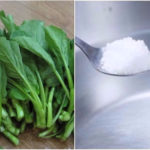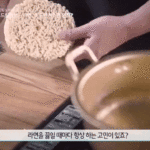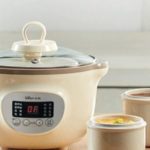Here are some useful tips to help you boil green vegetables to perfection, ensuring they are crisp and tasty:

For soft vegetables like yardlong beans, water spinach, and mustard greens, the boiling time should be kept short, between 2 and 5 minutes. Overboiling green vegetables can lead to a loss of vitamins and compromise their crisp, sweet taste.
Boil vegetables for only 2 to 5 minutes
Some root vegetables may take longer to cook, but they should still be boiled for no more than 5 to 8 minutes or until they are just tender.
Cooking Utensils
Did you know that the choice of cooking utensil can impact the taste of boiled vegetables? Using a deep cast-iron skillet or a deep pot ensures that the water covers the vegetables, resulting in even cooking and attractive coloring.
Seasoning
When boiling vegetables, adding a pinch of salt or a little sugar to the water can enhance their flavor and improve their appearance. Alternatively, adding a small amount of cooking oil can make the vegetables look glossier, although this method is not suitable if you plan to use the cooking water for blanching water spinach.
A splash of fresh lemon juice or rice vinegar can also enhance the color of the vegetables without affecting their natural crisp, sweet taste.
Common Mistakes to Avoid
Avoid boiling vegetables over low heat, as this can make them soft and mushy, leading to a loss of color and vitamins.

Do not soak vegetables in cold water after boiling, as this will make them lose their appealing warmth and taste less delicious.
It is best to serve boiled vegetables immediately to prevent the loss of vitamins. Some vegetables should not be stored in the refrigerator or reheated, as they may produce toxic substances.
Once the vegetables are cooked, remove them from the pot and drain them immediately. Leaving them in the pot with the lid on can cause them to turn yellow and develop an unpleasant odor.
Boiling Common Vegetables
For crisp broccoli, water spinach, and carrots, boil for about 3 minutes; for a softer texture, extend the boiling time to 5 minutes, and add a little sugar to the water.
For bean sprouts, simply blanch them in water that is not yet boiling, and remove them once the water reaches a rolling boil.
Yardlong beans tend to turn black due to their high sap content. When boiling them, use plenty of water, add a little salt, and start timing once the water reaches a rolling boil.
Snake beans have a sticky texture, so before boiling, trim the ends and soak them in a dilute salt solution for about 5 minutes to reduce the stickiness. Boil them with a little salt.
Boiled vegetables are a simple yet refreshing and nutritious dish, packed with essential nutrients. Apply these handy tips to prepare perfectly boiled vegetables every time, and enjoy delicious and healthy meals with your family!
Mẹo hay ST
Grilling Chicken: How Mistakes Can Affect Taste and Well-Being
Cooking grilled chicken can be a tricky affair–one wrong move could lead to a tasteless, unappetizing dish that may even be unsafe to eat. Therefore, it’s important to understand the basics of grilling chicken and the common mistakes that can occur. In this article, we will explore the safety concerns surrounding grilled chicken and how to avoid them.
How to Steam Vegetables Without Water While Keeping Nutritional Quality
 Vegetables Without Water While Keeping Nutritional Quality’>
Vegetables Without Water While Keeping Nutritional Quality’>Are you looking for an efficient and nutritious way to cook your vegetables? XANH Appliances has the answer with two incredible methods of boiling vegetables without the need for water. Find out how to make the most of your vegetables with XANH Appliances!
Increases in Energy Efficiency Achieved with Slow Cookers
As the demand for convenient cooking continues to rise, more and more families, especially those with young children, are turning to slow cookers as a way to create healthy and tasty meals with minimal effort. With so many settings and benefits, slow cookers offer a great solution for busy households.





































